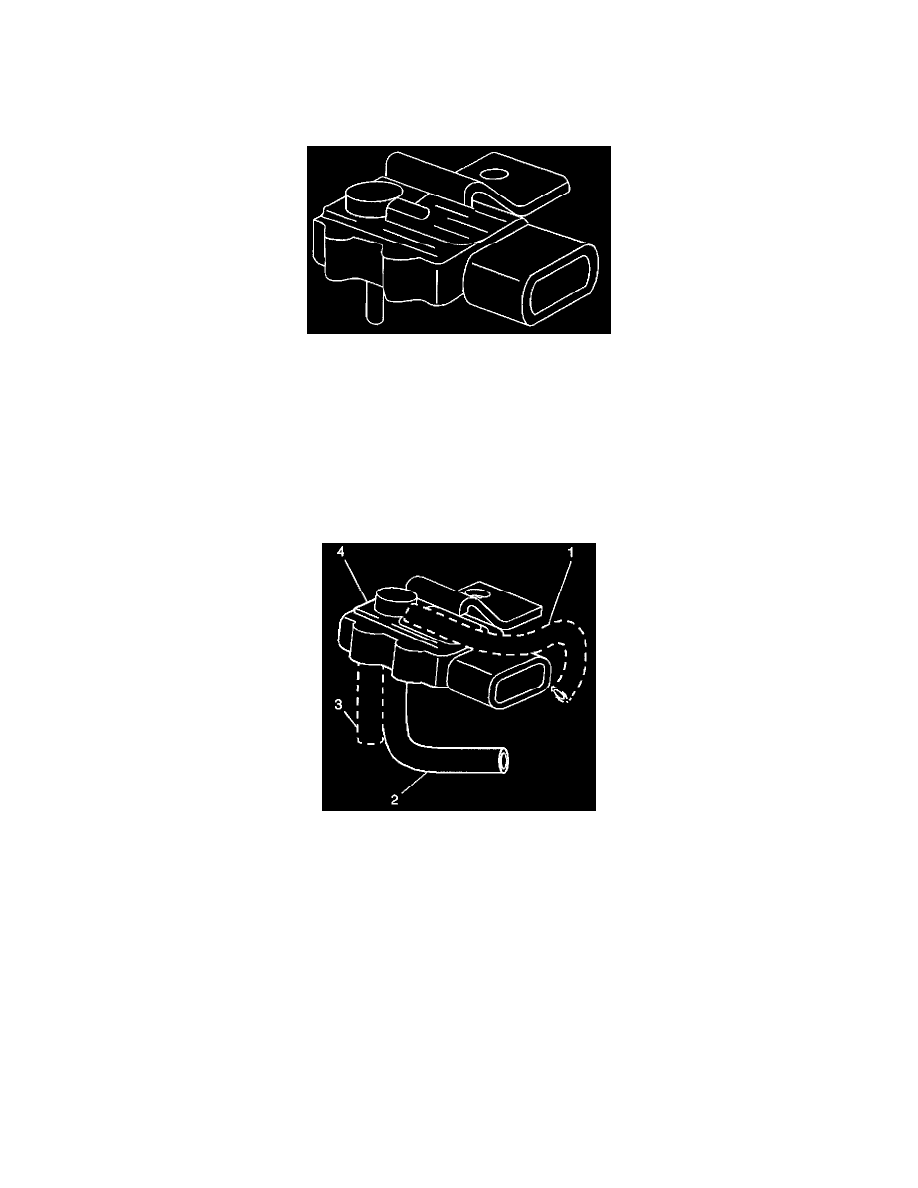Prizm L4-108 1.8L DOHC VIN 8 MFI (1998)

Fuel Tank Pressure Sensor: Description and Operation
Fuel Tank Pressure Sensor
General Description
Fuel Tank Pressure Sensor
Fuel Tank Pressure Sensor
The fuel tank pressure sensor is located on top of the EVAP canister near the fuel tank. The fuel tank pressure sensor measures the fuel vapor pressure in
the fuel tank and compares it with the barometric pressure. The fuel tank pressure sensor is similar to the manifold absolute pressure sensor. The
powertrain control module (PCM) supplies 5 volts and a ground to the sensor. The fuel tank pressure sensor sends a voltage signal from 0.1 to 4.9 volts
back to the PCM. The PCM uses the fuel tank pressure sensor signal as one of the inputs in order to detect EVAP control system malfunctions.
Design
Fuel Tank Pressure Sensor
Fuel Tank Pressure Sensor
The fuel tank pressure sensor (4) contains a silicon chip that changes its electrical resistance when pressure is applied. The fuel tank pressure sensor
converts the positive or negative pressure that is applied to the sensor's pressure (vapor) port (2) into an electrical signal. The fuel tank pressure sensor
amplifies the electrical signal and sends the signal to the PCM. There are two fuel tank pressure sensor designs in production. Both designs incorporate a
drain port that is connected to the EVAP canister drain line. The first design (1) has the drain port located on top of the sensor. The second design (3)
has the drain port located behind the pressure port (2). Be sure to connect the correct hose to the correct port when servicing or replacing the fuel tank
pressure sensor.
Results Of Incorrect Operation
Poor idle, stalling and poor driveability can be caused by:
^
A damaged EVAP canister.
^
Hoses that are split, cracked and/or incorrectly connected to the proper tubes.
^
A malfunctioning purge solenoid.
Evidence of fuel loss or fuel vapor odor can be caused by:
^
Liquid fuel leaking from fuel pipes.
^
A cracked or damaged EVAP canister.
^
Disconnected, misrouted, kinked, deteriorated or damaged vapor hoses.
